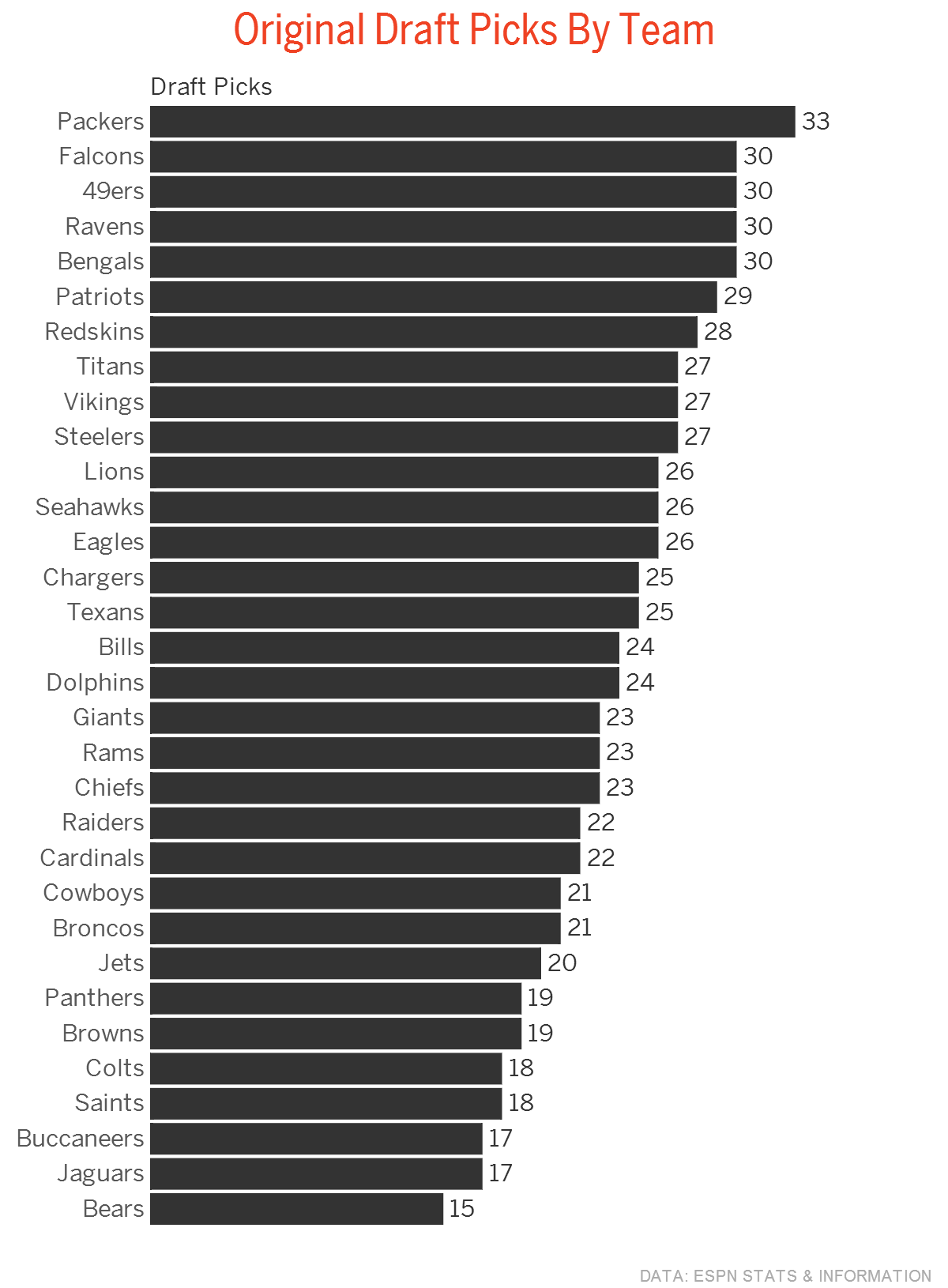Inside Slant: Building with own draft picks
By Kevin Seifert | ESPN.com
We're going to build through the draft.
Have you ever heard a more repeated phrase about NFL team building? It is the public goal of every owner and general manager, even those whose teams routinely participate in veteran free agency. Young players are cheaper and healthier and can be bound to their initial team for at least four years.
Here's a better question: How closely have teams actually followed that practice? The graph at the bottom of this post offers one, albeit imperfect, way to measure that commitment.
The number associated with each team is the total original draft picks remaining on the roster as of late last week, via ESPN Stats & Information data. You will see most teams are bunched in the 20s, and as is often the case, the most illuminating revelations sit on the fringes.
The Green Bay Packers have an NFL-leading 33 players they drafted currently on their roster, more than twice that of the Chicago Bears (15) and nearly twice the Jacksonville Jaguars (17) and Tampa Bay Buccaneers (17).
There are plenty of mitigating circumstances within those numbers; variations in total number of picks and continuity of front offices are two big ones. But at the very least, we can say that teams on the lower end of this analysis must navigate even less-reliable means to assemble their rosters.
So as we march interminably toward the 2014 draft (May 8 is just around the corner!), it's worth looking at how the disparity developed between the top and bottom teams and how significant it is. We will use the Packers and Bears, who have been fighting for NFC North supremacy during the past four years, as a guide.
No team has been more disciplined than the Packers in maintaining and multiplying their supply of draft picks, while the Bears have been among the league's most aggressive in free agency and trades. The bottom line is that the Packers have made 37 draft picks over the past four years and the Bears have made 23.
Why such a disparity over a relatively short period of time? The two biggest factors are a series of Bears trades and the Packers' successful manipulation of the NFL's compensatory draft system.
The Bears traded their 2010 first-round pick to the Denver Broncos as final payment for quarterback Jay Cutler. Their second-round pick that year went to the Buccaneers for defensive end Gaines Adams. Their third-round picks in 2012 and 2013 went to the Miami Dolphins for receiver Brandon Marshall, and they used a fourth-round pick to trade up in 2011 and select defensive tackle Stephen Paea in the second round.
Meanwhile, the Bears' heavy use of veteran free agency -- the signings of left tackle Jermon Bushrod, tight end Martellus Bennett and running back Michael Bush among them -- have left them without a single compensatory pick between 2010 and 2013. The Packers, who rarely dip into free agency, picked up an additional seven selections from that system over that same period.
The Packers have won the past three NFC North titles, all while the Bears have missed the playoffs, but it's too convenient to connect those results solely to team-building philosophy. The difference between the two teams -- a total of 1½ games over the past two seasons -- is more precisely linked to the quality of play between Aaron Rodgers and Cutler than any other single factor.
Still, the Bears' limited draft success helped trigger a general manager transition from Jerry Angelo to Phil Emery two years ago. Emery's effort to retrofit the team in a timely fashion has worked against any larger goal of accumulating draft picks. The same can be said of the Jaguars, who are entering their second year under general manager David Caldwell, and the Buccaneers, whose new leadership duo of general manager Jason Licht and coach Lovie Smith has overhauled the roster with more than a dozen free agents this spring.
More...





